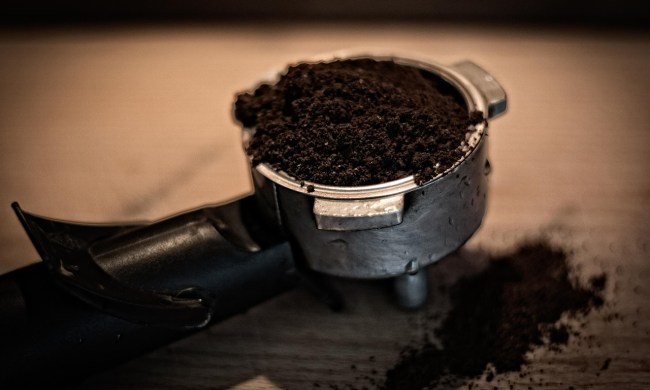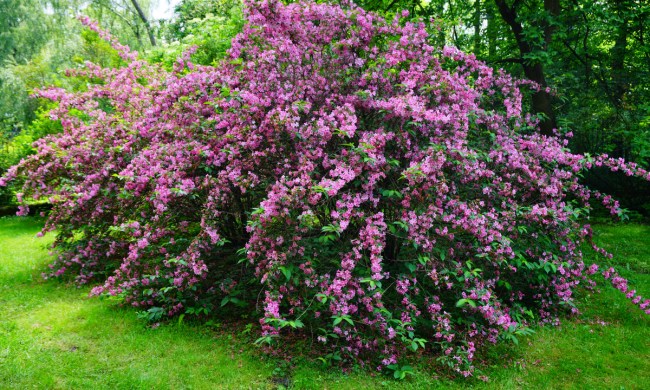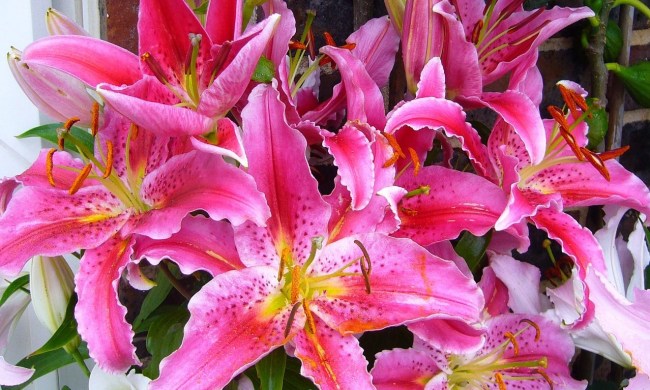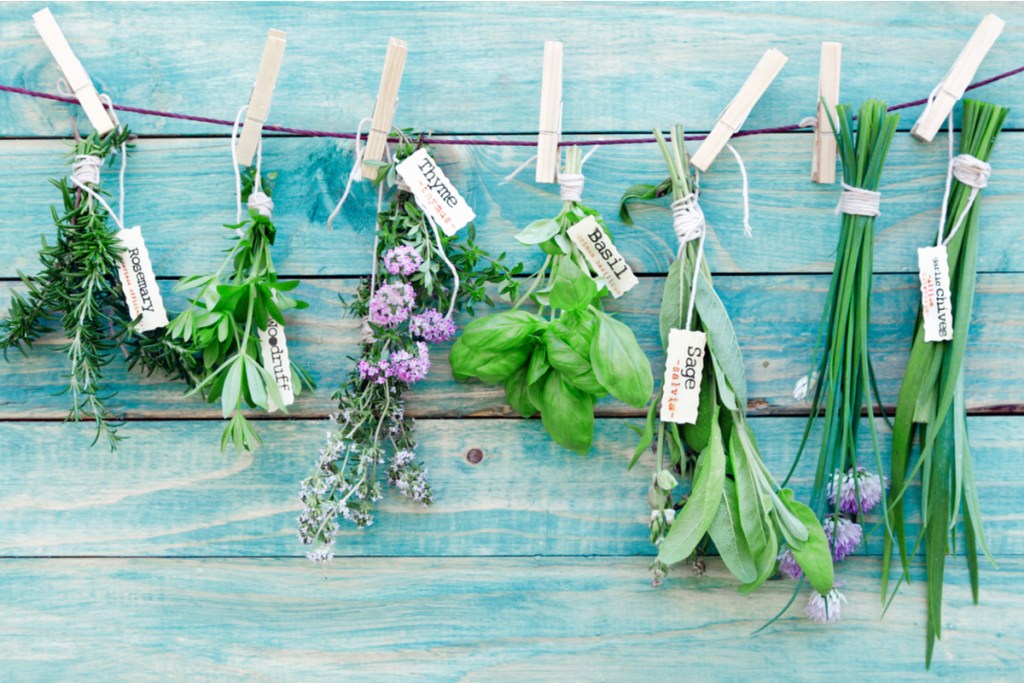
Cooking with fresh herbs adds a subtle depth of flavor like nothing else. But keeping a steady supply of basil, cilantro, mint, and other favorites gets expensive, and at some times of the year impossible. What better way to keep the supply going than by growing your own? It’s easy to grow a pot or two of individual plants, but the best selection comes from a true herb garden. If you don’t have a yard, or balcony space, or time to maintain a traditional garden, you’re in luck. Read on for creative inspiration on how you can grow a beautiful vertical wall herb garden right in the kitchen.
Garden on a shelf
Take advantage of existing shelf space, or install one or more in a convenient location. Sturdy shelves, anchored to wall studs, offer a ton of flexibility because they can hold more weight than most of the “cute” ideas. Simply place potted plants on the shelf, with or without grow lights, or install an automated hydroponic system like the AeroGarden Harvest Elite that provides everything your plants need to grow fast and produce an ample supply of herbs.
The garden on a shelf method is great for growing lots of different kinds of herbs, and different growing methods. If the shelf is narrow, consider using it for upright growers like chives, basil, cilantro, and lemongrass.
Herb organizer
Convert a fabric shoe organizer into a multi-pocket wall hanging herb garden. These vertical organizers attach directly to anchors in the wall, or to a stout curtain rod, via grommets at the two top corners. They typically feature 20 to 24 tiered pockets that are the perfect size to insert 4-inch potted herbs (use a plastic bag liner to protect the wall from moisture), with plenty of extra pockets to hold herb scissors, a spool of twine or rubber bands for bundling sprigs, tea infusers, and other tools.
This configuration works well for trailing and bushy herbs, like thyme, oregano, mint, rosemary, and others. Tall herbs like basil work here too, just be sure to prune regularly.
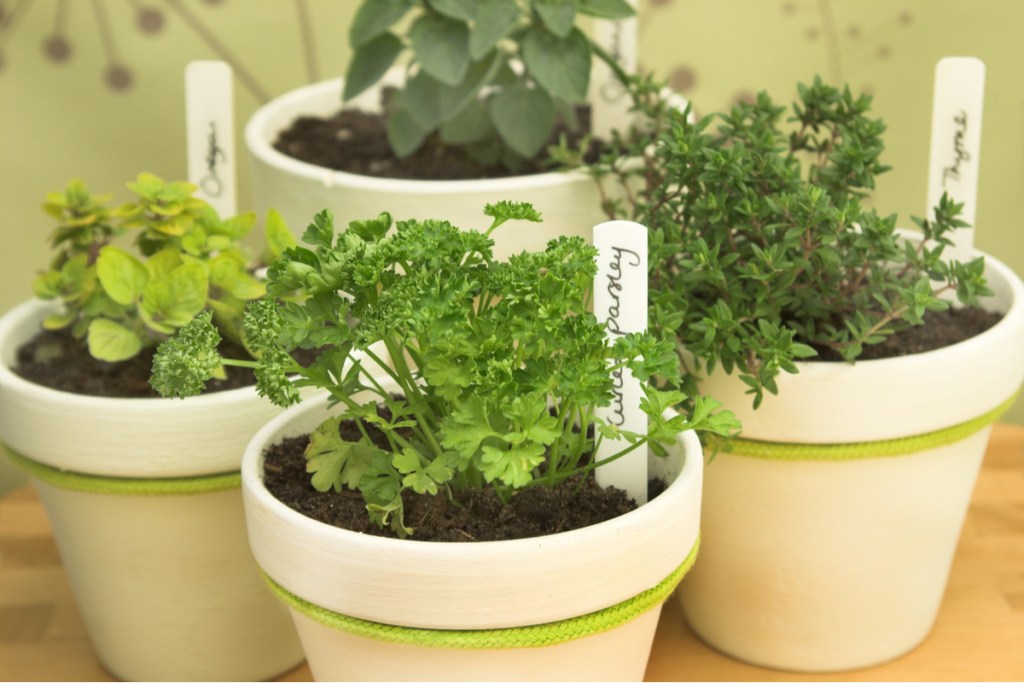
Closet rod garden
A closet rod makes an excellent support for hanging planters, and includes shelf space above the rod supports. Mount two closet rod support brackets, preferably into studs or using wall anchors in drywall, then attach a 1 or 1.5-inch hardwood dowel closet rod with screws through the base of the rod support hooks. Finish off with a painted shelf, cut to length, across the top. Suspend 6 to 8-inch planters from the closet rod at the desired heights. This setup puts air space between the planters and the window or wall, lets you easily customize the heights of the planters, and adds shelf space above the hanging planters.
Bushy and trailing herbs like sage, rosemary, thyme, oregano, and mint work well in hanging baskets. The added air space allows the plants to better utilize sunlight when installed in front of a window.
Ceiling hooks
Sometimes wall space is not available for hanging. When this is the case, a ceiling hook makes a great alternative. These specially designed hooks attach into the ceiling joists for strong support, or use weight distribution hardware similar to hollow wall anchors to mount into the drywall. Used alone, one can support a single pot mixed herb garden. When paired (or tripled) along a line in front of the wall, they can be used to install a rod for hanging several planters at variable spacing and heights.
A vertical wall herb garden supported by ceiling hooks minimizes the visual presence of hardware and support mechanisms for a more open feel. It maximizes use of the available light, and can be supplemented with judicious positioning of grow lights. It works well for all types of herbs.
Ladder planter
Ladders with wide steps, leaned against a wall, are surprisingly functional as plant stands. Use the lower rungs for heavier or larger upright plants to anchor the arrangement, and use the top for smaller pots or trailing plants. The angle of the ladder makes good use of the room’s light, reducing the shade effect that vertical shelves have.
This system lends itself for medium to large herb gardens and mixed plantings with both traditional house plants and culinary herbs. Upright herbs like basil, cilantro, chives, and parsley work especially well. A ladder offers plenty of space to add supplemental clamp-on grow lights if needed.
Shadow box
For something completely different, you could shrink down the “green wall” concept to the size of a picture frame. Buy or build a deep frame, thick enough to create a rooting zone. Fill the middle by sandwiching potting soil between layers of sphagnum moss and coco fiber. Back it with a protective sheet of plastic or melamine. Plant rooted cuttings into the moss side and hang it on a brightly lit wall.
This project works best with herbs that produce easy-to-root shoots. Try it with sage, thyme, oregano, and basil. Remove it from the wall to water thoroughly as needed. Keep this project on the small side, maybe 12 by 12-inches max, as the soil will settle over time, which becomes more noticeable and problematic with larger plantings.
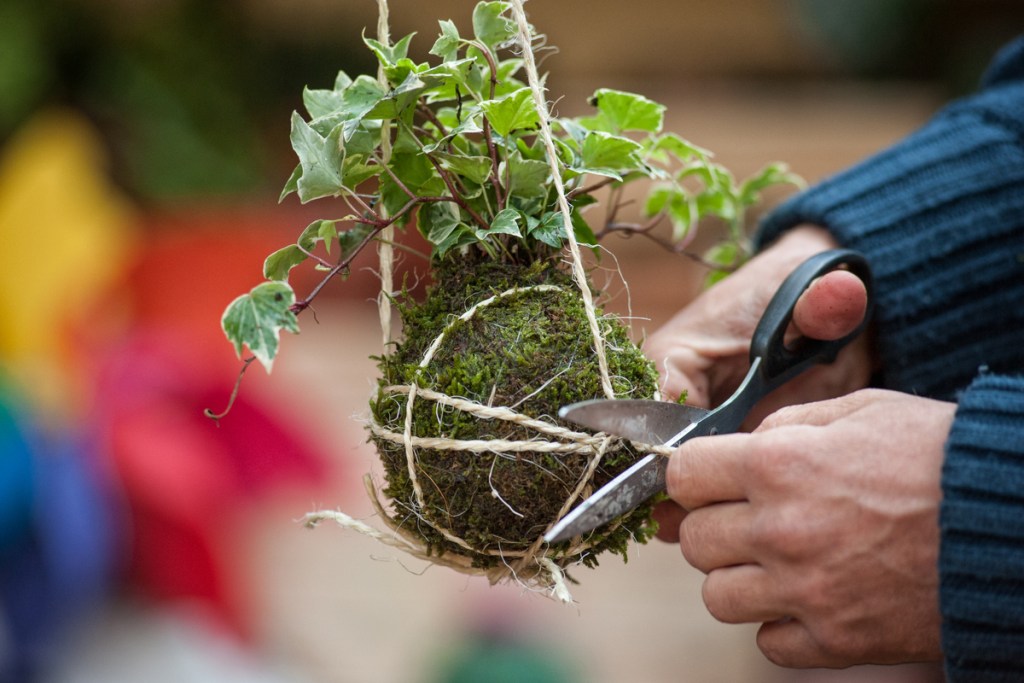
Kokedama herb garden
Kokedama, or Japanese string gardens, are moss ball planters that can be suspended like hanging planters or positioned in a small bowl or stand on a shelf. It starts with a sticky softball-sized ball of soil, packed around the roots of a plant. The root ball is then surrounded with a layer of sphagnum moss and held together with twine. Kokedama plantings can be displayed and used individually, as an artistic focal point, or in collections as a true garden.
The most suitable herbs for Kokedama are those that can tolerate some drying out. Try it with rosemary, thyme, oregano, sage, or lavender. Mixed plantings of creeping (thyme, oregano) and upright (rosemary, sage) make good pairings within the same Kokedama.
Living wreath
Craft stores offer a variety of natural fiber wreaths in different sizes that can be converted to living wreath herb gardens. Both straw and grapevine wreath forms will work, but each should be treated a bit differently. Soak straw forms overnight, then create voids every 4 to 6 inches to install small herb plants or rooted cuttings. With vine forms, install herb plants first, then fill the remainder with moss and secure with twine. Cover either wreath with cling wrap to protect walls from moisture.
Try this project with any of the low-growing herbs, like thyme, oregano, or creeping rosemary. Remove from the wall to water and let it drain thoroughly before rehanging.
Mason jars
Mason jar fans have developed numerous ways to hang the jars from walls, and to grow plants in different media. Some combinations work better than others. Since the jars don’t drain, the best growing methods are passive (non-circulating) hydroponic. With water-based growing, convenient removal and rehanging for water changes is important. Cheap, simple Mason jar hangers are perfect for this. Attach them to the top of the jars, and hang them from any overhead support system.
Basil is a long time favorite for hydroponic growers. Other great choices for this setup include chives, lavender, parsley, rosemary, and sage. Simply pop stem cuttings into the water to let them root out, or start from seeds with a kit.
Macrame
Presentation is as important as production, right? Show off your crafting skills by making your own custom macrame herb garden hanger. You’ll only need a roll of strong cord, a metal ring, and a planter (or planters) of your choice. Macrame is a great way to suspend non-hanging containers from any overhead support, such as a ceiling hook or closet rod system. The best part is that you can make it just the right size to fit your needs.
Macrame is a great choice for trailing or bushy herbs, like basil, oregano, mint, trailing rosemary, lavender, and others.
Fresh herbs lend a subtle, verdant flavor to all kinds of dishes, but it’s not always practical or feasible to buy them at just the right time. With a convenient hanging garden, there’s no reason not to grow your own kitchen herbs for cooking. Creating your own indoor vertical herb garden is a great way to get crafty and give yourself a treat with any meal.

